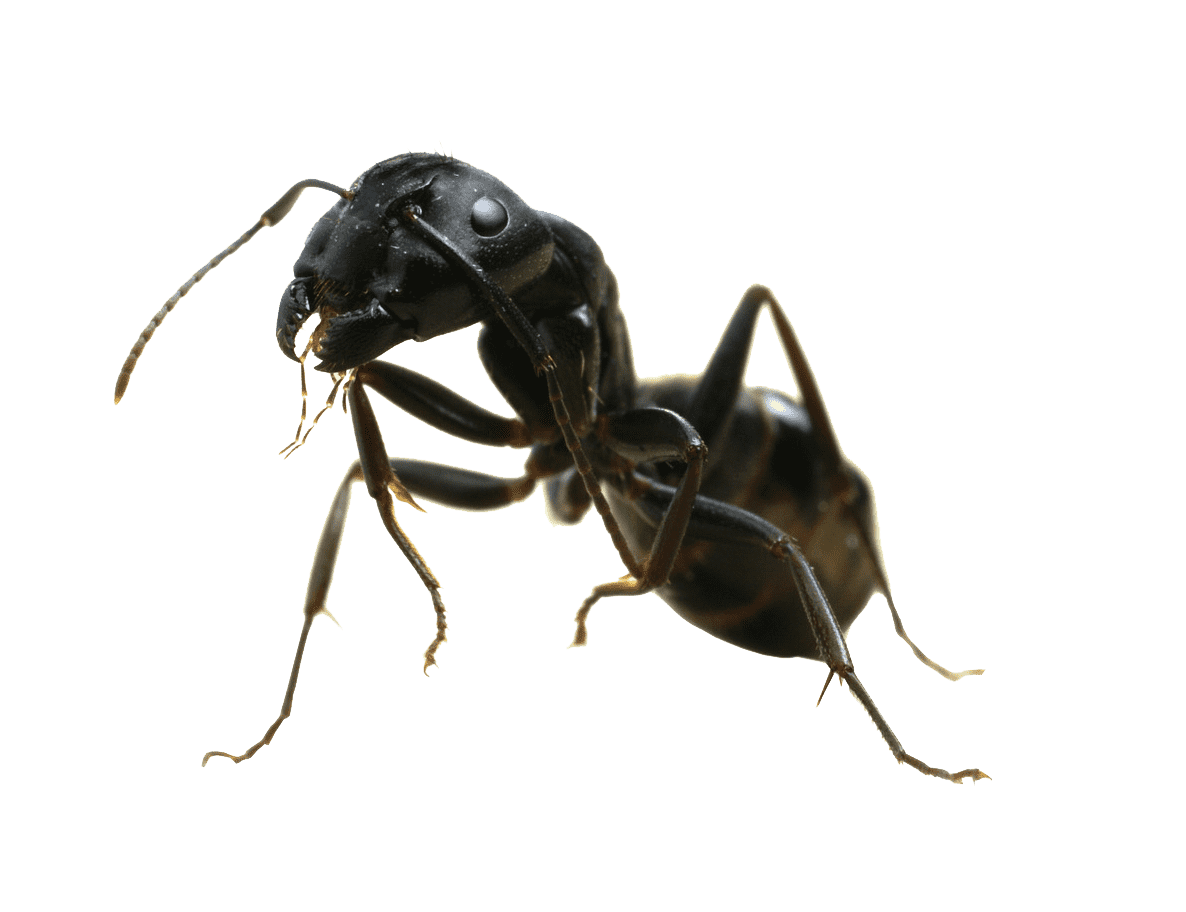
Carpenter Ant
Scientific Name: Camponotus pennsylvanicus
Fun Fact:
Carpenter ants are the largest ants in North America with super-sized strength to match their super size.
Lifespan: Queen-25 years / Worker 7 years
Description
Carpenter ants build nests inside wood consisting of galleries chewed out with their mandibles, preferably in dead, damp wood. They do not consume the wood, however, unlike termites. Sometimes, carpenter ants hollow out sections of trees. They also commonly infest wooden buildings and structures, and are a widespread nuisance and major cause of structural damage. However, their ability to excavate wood helps in forest decomposition. One of the most familiar species associated with human habitation in the United States is the black carpenter ant (Camponotus pennsylvanicus). The genus includes over 1,000 species. Carpenter ants also farm aphids. In the farming, the ants protects the aphids while they excrete a sugary fluid called honeydew, which the ants get by stroking the aphids with their antennae.
Although carpenter ants do not tend to be extremely aggressive, they have developed mechanisms to maximize their provision from a food source when that same food source is visited by a competing organism. This is accomplished in different ways. Sometimes they colonize an area near a relatively static food supply. More often, they develop a systemic way to visit the food source with alternating trips by different individual ants or groups
Behavior
Carpenter ants work to build the nests that house eggs in environments with usually high humidity due to their sensitivity to environmental humidity. These nests are called primary nests. Satellite nests are constructed once the primary nest is established and has begun to mature. Residents of satellite nests include older larvae, pupae, and some winged individuals. Only eggs, the newly hatched larvae, workers, and the queen reside in the primary nests. As satellite nests do not have environmentally sensitive eggs, the ants can construct them in rather diverse locations that can actually be relatively dry. Some species, like Camponotus vagus, builds the nest in a dry place, usually in wood.
Diet
Carpenter ants are considered both predators and scavengers. These ants are foragers that typically eat parts of other dead insects or substances derived from other insects. Most species of carpenter ants forage at night. When foraging, they usually collect and consume dead insects. Some species less commonly collect live insects. When they discover a dead insect, workers surround it and extract its bodily fluids to be carried back to the nest.
Pest Control
Carpenter ants can damage wood used in the construction of buildings. They can leave behind a sawdust-like material called frass that provides clues to their nesting location. Carpenter ant galleries are smooth and very different from termite-damaged areas, which have mud packed into the hollowed-out areas. Carpenter ants can be identified by the general presence of one upward protruding node, looking like a spike, at the “waist” attachment between the thorax and abdomen. Control involves application of insecticides in various forms including dusts and liquids. The dusts are injected directly into galleries and voids where the carpenter ants are living. The liquids are applied in areas where foraging ants are likely to pick the material up and spread the poison to the colony upon returning.
How to Get Rid of Carpenter Ants
Carpenter ant control involves application of insecticides in various forms including dusts and liquids. The dusts are injected directly into galleries and voids where the carpenter ants are living. The liquids are applied in areas where foraging ants are likely to pick the material up and spread the poison to the colony upon returning. Easy to apply and devastating to carpenter ant colonies is Advance Carpenter Ant Bait. This bait can be applied to galleries or runways where ants have been seen. Getting rid of Carpenter ants is important to do as soon as possible. Leaving nests in place for too long can result in substantial damage to wooden structures.
(706) 221-8000
REQUEST A QUOTE

100% Satisfaction
There is a reason our work is guaranteed…we do it right. If you would ever have a problem with pests while we are in charge of your pest control, we will work until the problem is resolved. Our contracts provide you with quarterly service and we will take care of any problems that may happen to arise between visits.
We Guarantee It!

Request Free Pest Inspection
EMERGENCY SERVICE AVAIALBLE
Request Free Pest Inspection
EMERGENCY SERVICE AVAIALBLE


